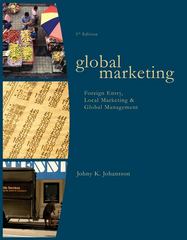Question
Ann and Bob had their first date. Each either felt romantic chemistry (C) or no chemistry (NC) with the other person. Each person knows his/her
Ann and Bob had their first date. Each either felt romantic chemistry (C) or no chemistry (NC) with the other person. Each person knows his/her own feeling but does not know the feeling of the other person. Assume a common prior belief that the other person felt chemistry with probability Pr(C) =pand no chemistry with probability Pr(NC) =1-p.
Ann and Bob are old-fashioned romantics and they made the following rule after the first date: No texts/calls/DMs. Instead, they can choose whether to appear (A) or not appear (NA) under the USyd Quadrangle clock tower at sunset on the next day. Their payoffs are given as follows:
(From a first-person perspective)
If I felt chemistry (C) and I appear (A) under the clock tower, my payoff is 100 if the other person also appears (A) and -100 if the other person doesn't (NA).
If I felt chemistry (C) and I choose not to appear (NA) under the clock tower, my payoff is -30 regardless of the other person's action (because I won't know anyway).
If I felt no chemistry (NC) and I appear (A) under the clock tower, my payoff is 20 if the other person appears (A) and -20 if the other person doesn't (NA).
If I felt no chemistry (NC) and I choose not to appear (NA) under the clock tower, my payoff is 10 regardless of the other person's action.
In the game of two romantics, when p = 0.6, how many pure-strategy Bayesian Nash equilibria are there?
Step by Step Solution
There are 3 Steps involved in it
Step: 1

Get Instant Access to Expert-Tailored Solutions
See step-by-step solutions with expert insights and AI powered tools for academic success
Step: 2

Step: 3

Ace Your Homework with AI
Get the answers you need in no time with our AI-driven, step-by-step assistance
Get Started


